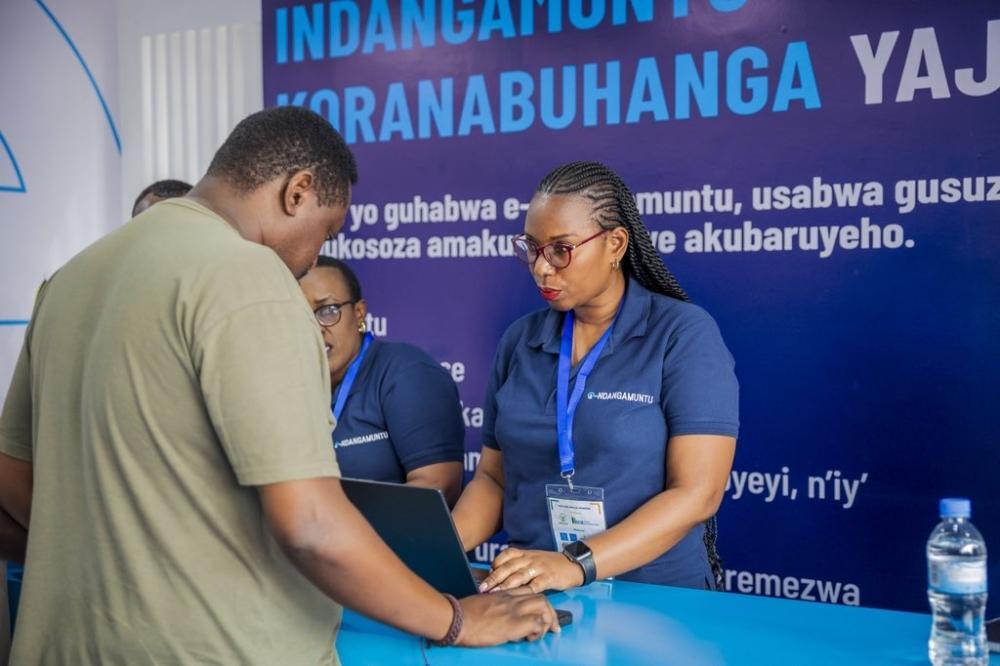Africa-Press – Rwanda. More than 3,300 people have registered for the upcoming digital identity card, known as the Single Digital ID (SDID), since the registration campaign began on August 7, according to the National Identification Agency (NIDA).
The first phase of registration took place at the Rwanda International Trade Fair and Itorero Indangamirwa in Nkumba, where officials verified personal data before pre-enrolling applicants into the system.
NIDA says the next phase will expand registration at the district level starting in September.
“This is a nationwide project that will cover all citizens, as well as foreigners, refugees, migrants, asylum seekers, stateless persons, and Rwandans living abroad,” NIDA said in a statement sent to The New Times.
Dieudonné Manago, NIDA’s Director of Production and Distribution, highlighted the enhanced security features of the SDID.
Unlike the previous ID, which relied on two fingerprints during registration, the new digital ID captures ten fingerprints, iris scans, and facial recognition.
“Even if you lose your phone, you can download your digital ID again without any risk of losing access,” Manago explained.
The system is designed to authenticate identities securely, whether via smart devices or service centers. For citizens traveling within the region, the SDID can also link to cross-border services, although printing a physical card remains optional.
Manago emphasized that the SDID represents a shift in identity verification.
“Previously, the ID card itself carried more value; now, the person does. Authentication ensures that service providers recognize you correctly,” he added.
The SDID system also links data across key institutions, including the Rwanda Social Security Board, Rwanda Revenue Authority, Ministry of Education, and Ministry of Local Government, allowing for synchronized and verified information.
Previously, citizens often relied on physical IDs, which could be lost or forgotten. If lost, the holder would have to apply for a new card.
Shema Pacifique, a project management and IT specialist, explained how the new system addresses these challenges.
“With the digital ID, many errors are corrected automatically, including discrepancies in names, birthdates, and parental information. The system will unify records across institutions, ensuring accurate data wherever it is used,” he said.
To register, applicants must provide their current national ID card, parents’ ID numbers, a spouse’s ID number if applicable, and birth certificates for their children. After verification, applicants receive a reference number and are scheduled for biometric enrollment, which includes fingerprints, iris scans, and facial recognition.
Jean Claude Niyokwizerwa, a Digital ID and Trust Services expert with the Rwanda Digital Acceleration Project, highlighted the importance of secure data.
“Possession of an SDID card is not proof of nationality, nor does it have to be presented physically to access services. Service providers will rely on secure digital authentication, and citizens can store their ID on their phones or use secure tokens,” Niyokwizerwa said.
“You choose what data to share, and you give permission each time your information is used.”
The government plans to spend Rwf12.2 billion in 2025/2026 on this national digital identification and authentication project. This is a project that will cost a total budget of Rwf54.2 billion.
For More News And Analysis About Rwanda Follow Africa-Press









